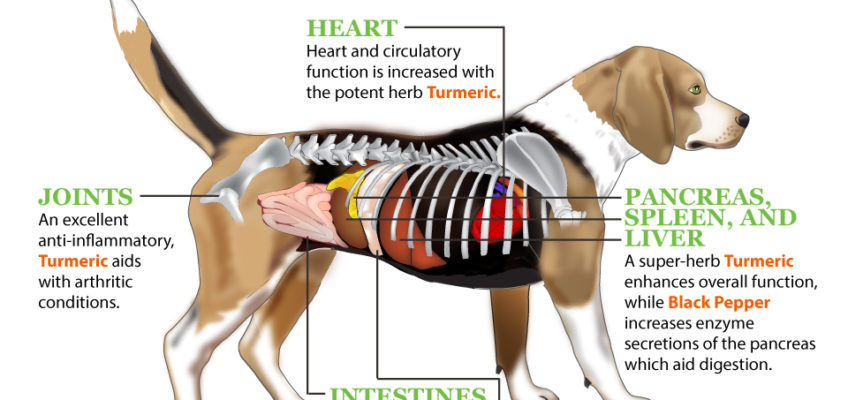If you cook, you may already be familiar with turmeric, but for first timers, here’s a quick culinary lesson to get us started. The turmeric herb, a member of the ginger family, is most commonly known for its deep orange color and is used for cooking, herbal medicine and dyes. Native to Middle Eastern and Southeast Asian countries, it has been a staple in cooking for thousands of years. Today it is a key ingredient in most curry dishes as well as yummy Thai, Indian, and Persian plates.
Ayurvedic and Chinese medicines have long known the benefits of turmeric for the body, inside and out.
“Ay….ur…vedic medicine?”
Quick explanation. An ancient Ayurvedic proverb reads: “When diet is wrong medicine is of no use. When diet is correct medicine is of no need.” Ayurvedic medicine is the traditional medicine of India, originating over 5000 years ago. How is this relevant today? Because it doesn’t just look at the aspect of treatment, it looks at prevention and using elements like nutrition, exercise and lifestyle factors to re-establish balance in the body.
What we eat is a key component of this holistic healing approach.
Spice of Life
OK, back to turmeric. So we know that it’s a spice. It’s orange. We cook Eastern and Asian food with it. But why is it so good for our pets? The bio-active compound (active ingredient or healing properties) of turmeric is “curcumin” (not to be confused with a different spice called cumin). Curcumin is responsible for its bright orange color as well as a host of health benefits. This prime ingredient acts as a spice, but also as a pain reliever. For this reason, it’s a great food additive for pets that suffer from ailments and illnesses which cause pain.
But it’s also beneficial in many other ways! Let’s look a little closer at Eastern medicine to understand how it is used to maintain good health.
Traditional Asian medicine used turmeric for its ability to detoxify the body, purify the blood, stimulate bile production in the liver, disinfect wounds, and as a stomach tonic. In addition, Thais used it to treat diarrhea and other stomach ailments, as well as to eradicate ringworm, a fungal infection. In Afghanistan and Pakistan, turmeric is applied to wounds to cleanse and stimulate recovery, keeping harmful bacteria away.
Anti-Everything
Western medicine is finally catching up with Eastern practice. Turmeric is now being researched extensively for pharmacological use in treating and/or reducing symptoms related to a wide range of health conditions. The National Institute of Health is conducting 19 clinical trials on turmeric and curcumin. A paper written for the American Academy of Pain Management discusses the health benefits of turmeric.
“Turmeric is one of the most potent natural anti-inflammatories available,”
says Dr. Randy J. Horwitz, the medical director of the Arizona Centre for Integrative Medicine and assistant professor of clinical medicine at the University of Arizona College of Medicine.
Dr. Horwitz also cites a 2006 University of Arizona study that found this potent anti-inflammatory to reduce the symptoms associated with rheumatoid arthritis. Clinical studies have shown that curcumin in turmeric is a powerful antioxidant. Antioxidants neutralize free radicals which cause the painful inflammation and damage to joints affected by arthritis.
This is pretty significant for our senior K9 friends that may be suffering from the aches and pains associated with arthritis and aging in general.
The anti-inflammatory properties, combined with the fact that turmeric is a natural antiseptic and antibacterial agent, suggests that it’s also useful for disinfecting and treating skin injuries. Research suggests that when using it topically, mix it with honey. This creates a paste that you can easily apply to wounds. We talked about raw honey before, so you probably already know that honey also has high antibacterial properties. Of course, you will have to keep an eye on your furry friend as the combination of turmeric and honey may also be a tasty treat.
Heart Health
Another concern with our senior pets is ensuring heart health. Like us, our pets are susceptible to blood clots and excess cholesterol. You may have heard of LDL (bad cholesterol) and HDL (good cholesterol). Well turmeric has been found to lower LDL levels which support both heart and liver health.
In addition, turmeric helps to thin the blood, reducing the risk of deadly clots that can lead to strokes and heart attacks. It’s important not to thin your dog’s blood too much, but the right amount can be helpful. If your pet is on medication, especially those that thin the blood, check with your vet for the appropriate dosage.
The Great Detoxifier
What about the liver? Yes, turmeric is good for that too.
Our environment is becoming more and more toxic and that not only affects us, it impacts Fido as well. Our pets are susceptible to toxins in the environment and in their food, especially commercially produced kibble and treats.
The liver plays a significant role in removing toxins from the body. Think of the liver as the main industrial centre for the body. It’s involved in nearly every biochemical process required to run the body. The body’s abilities to clot blood, to breakdown harmful toxins, and to remove waste and store energy, are all affected by the liver. It is a major player in your pet’s digestion, storing vitamins and producing bile which is necessary to break down fat. It’s a pretty important piece of machinery for your pet’s overall health.
Curcumin is believed to stimulate bile production necessary for the digestion of fat in the liver. Active dogs need at least 20% fat in their diet; therefore, bile production is critical for good health.
In short, turmeric boosts the liver’s ability to metabolize fat and remove waste from the body.
As with any pre-existing condition, if your pet already suffers from liver disease, you should consult your vet before treating with turmeric as some studies indicate that turmeric may aggravate existing problems.
Anti-Cancer Properties!!!!
One of the most interesting discoveries I made while investigating the benefits of turmeric is that there are now reports coming out claiming that turmeric may help in the fight against cancer! This powerful antioxidant plays a significant role in preventative medicine.
But wait, there’s more!
In a study at UCLA, doctors found that curcumin seemed to block the cancer promoting enzyme that stimulates the growth of head and neck cancer. The Department of Small Animal Clinical Scientists has conducted studies that show that curcumin can inhibit tumor growth and may even shrink existing tumors. This has to do with the spice’s amazing ability to shut down blood vessels that feed tumors.
Antioxidant properties are also helpful in reducing the negative side effects of chemotherapy.
Now, we are not saying turmeric is the only thing you should do to prevent, control and/or treat cancer; however, it certainly has us excited about its anti-cancer properties.
Other Uses
If we haven’t already convinced you about the health benefits of turmeric, here are a few more uses:
- Aids in the treatment of epilepsy
- Helps relieve allergies
- Helps in preventing the formation of cataracts
- Used in treating depression (Yes, dogs can get depressed too)
- Kills parasites
- Heals stomach ailments, aids in digestive disorders, and reduces gas and bloating
- Acts as a binding agent and therefore great for treating diarrhea (Make sure you have lots of water available for your pet to drink!)
- Aids in fat metabolism and weight management
- High in fiber and rich in vitamins and mineral
So How Do I Feed It?
The suggested dosage is approximately 15 to 20 mg per pound of body weight in dogs, 150-200mg for cats. A simpler way of looking at it is an 1/8 to a 1/4 teaspoon per day, for every 10lbs of dog weight. Make sure your pet has lots of water to ensure that they don’t get constipated.
You can feed the powder, which is most commonly available, or crushed or fresh root. Sprinkle it right on top of your pet’s food and mix or, if you home cook, you can add it to the recipe. Quality varies and if you are buying turmeric in a local supermarket, it may be grown using nasty pesticides and herbicides. This lowers the potency. If possible, try to get high quality, organic turmeric. Be sure to store it in a tightly sealed container, kept in a cool, dark and dry place.
According to Dr. Demian Dressler, DVM known as the “Dog Cancer Vet” and author of Dog Cancer Survival Guide: Full Spectrum Treatments to Optimize Your Dog’s Life Quality and Longevity: “[…] curcumin has some bioavailability problems. This means that the stuff doesn’t, to a large extent, get absorbed into the blood after it is taken by mouth. However, there are ways around this.
Curcumin does not dissolve well in water. This is one of the things that limit its absorption. You can overcome this by mixing it with lecithin and water and making a slurry. Lecithin is available online. It is very, very gooey, so you must add some water to the curcumin-lecithin (about 4 parts water to 1 part lecithin). You can put some low sodium boullion, or similar agents, in it for flavor. Many of the commercial preparations have bromelain with it to enhance blood levels. No problem. Doses are approximate, and taken from human literature. For a large dog, use about 2 grams twice a day.”
BONUS RECIPE: Check out this Turmeric Paste you can make right at home for your dog!
Is There Anything Else I Should Know?
Remember how turmeric is a bright orange color? Well, the ancient monks used turmeric as a dye to stain their robes. Moral of the story: be careful and mix it in well with your pets’ food, because your pets might end up with turmeric mustaches!
Turmeric is a binding agent, so ensure that your pet has lots of water to reduce the likelihood of constipation.
Our research didn’t find many contradictions to taking turmeric medicinally. However, if your pet does have a pre-existing condition, is currently on medication, has a planned surgery, or is pregnant, it’s advisable to talk to your vet before feeding.
Spice up yours and your pet’s life with a little turmeric!
The following post was written by Planet Paws Blogger – Sarah MacKeigan
Sources & Information – Rodney Habib
Editor & Photographer – Lise Blinn




Lakiesha
It’s about time someone wrote about this.
Seven
I simply want to mention I am just new to blogging and site-building and absolutely liked your web-site. Most likely I’m want to bookmark your website . You definitely have superb posts. Appreciate it for sharing your website page.
Tundi
Your post has lifted the level of debate